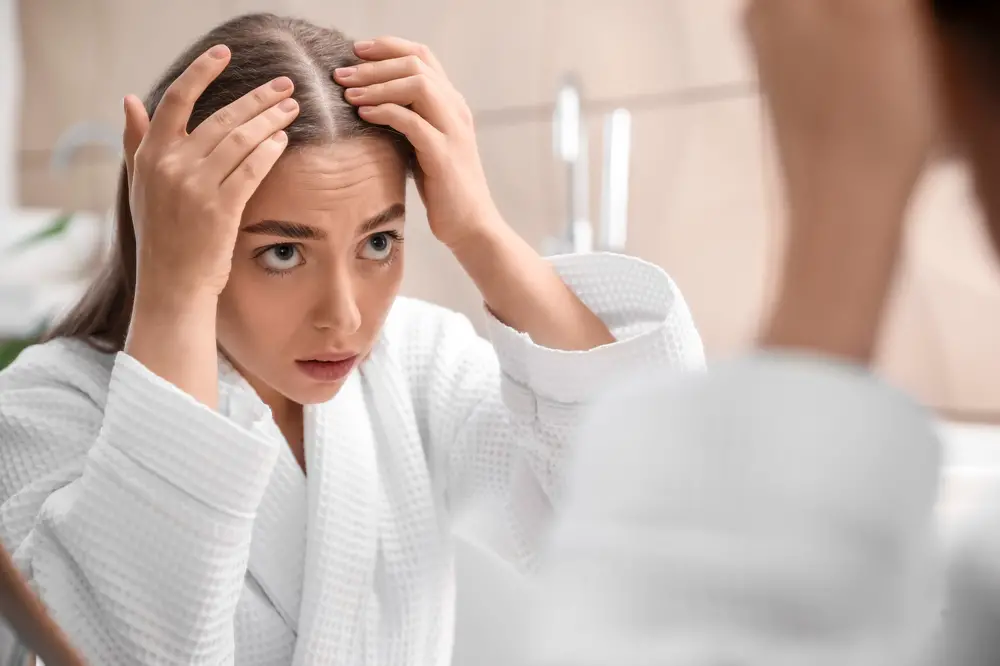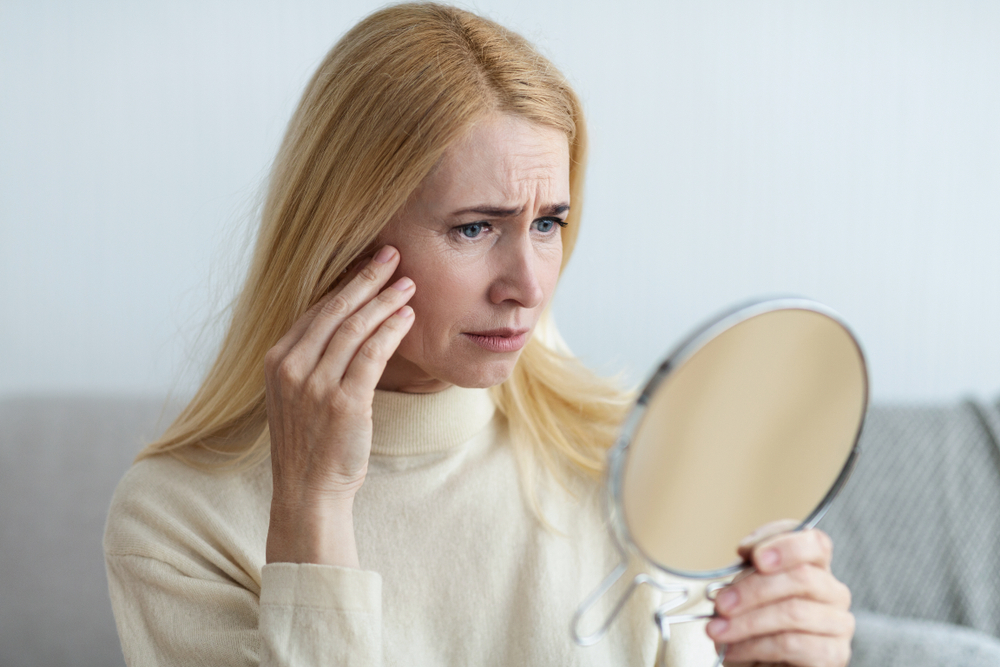A gorgeous glowing complexion makes you look healthy, youthful, and attractive, but many factors affect your skin’s condition, texture, and appearance. According to cosmetic dermatologist Dr. Carole Hazan, aging is inevitable, and the rate at which you develop fine lines and wrinkles is generally hereditary. Lifestyle habits can also speed up premature aging and cause unsightly skin imperfections, like dark aged spots, large open pores, and spider veins. The skin is the largest organ in the body, so it pays to be diligent about hydration and protection and feeding it with vitamins and nutrients to maintain its health and appearance, or you risk looking older and less attractive.
1. Dry Chaffed Skin
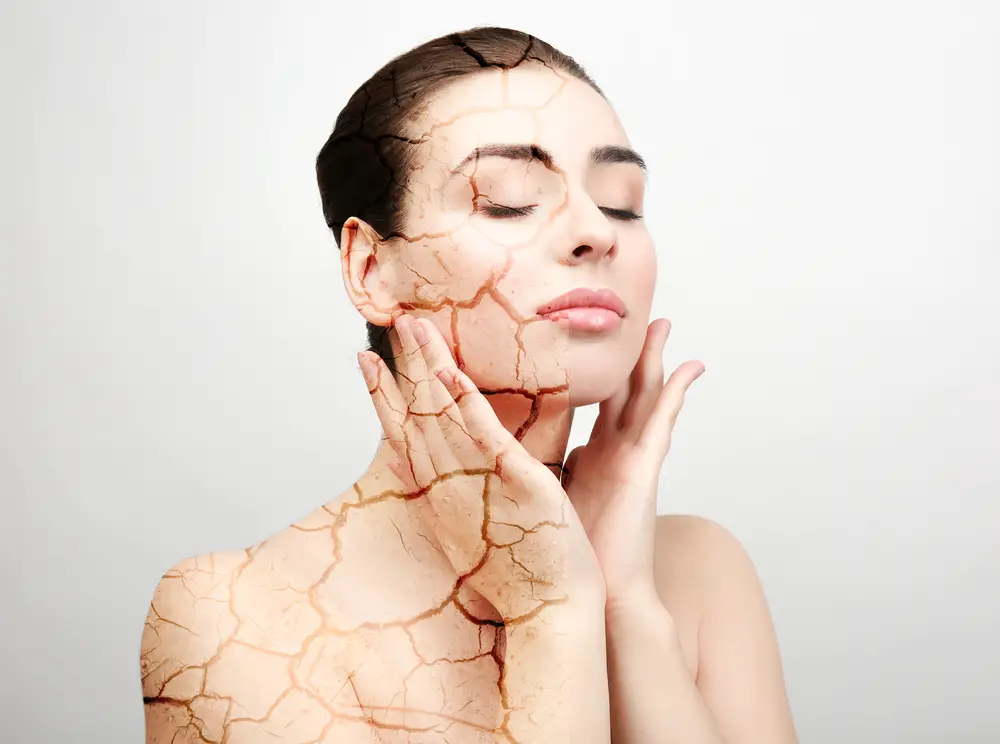
Dry, chaffed skin is one of the most visible signs that your skin is distressed, robbing you of that youthful, glowing complexion. Skin lacking moisture can crack, flake, and even feel tight or irritated. Factors like cold weather, wind, dehydration, or even friction from clothing can exacerbate the dryness. Drinking enough water and avoiding excessive alcohol can help keep your skin hydrated from within. Additionally, a soothing, fragrance-free moisturizer containing ingredients like aloe vera, shea butter, or coconut oil can replenish your skin’s barrier and lock in hydration.
When your skin is dry, it becomes more susceptible to irritation and premature aging, according to holistic skin expert Monica Watters of Sacred Touch. Fine lines and wrinkles become more pronounced on dehydrated skin, making it look older than it is. Using petroleum jelly on particularly rough patches, like elbows or heels, can also work wonders in restoring softness. Remember to exfoliate gently to remove dead skin cells before applying moisturizer for maximum effectiveness. Preventing dryness starts with good skincare habits and protecting your skin from environmental aggressors.
2. Premature Aging And Wrinkles
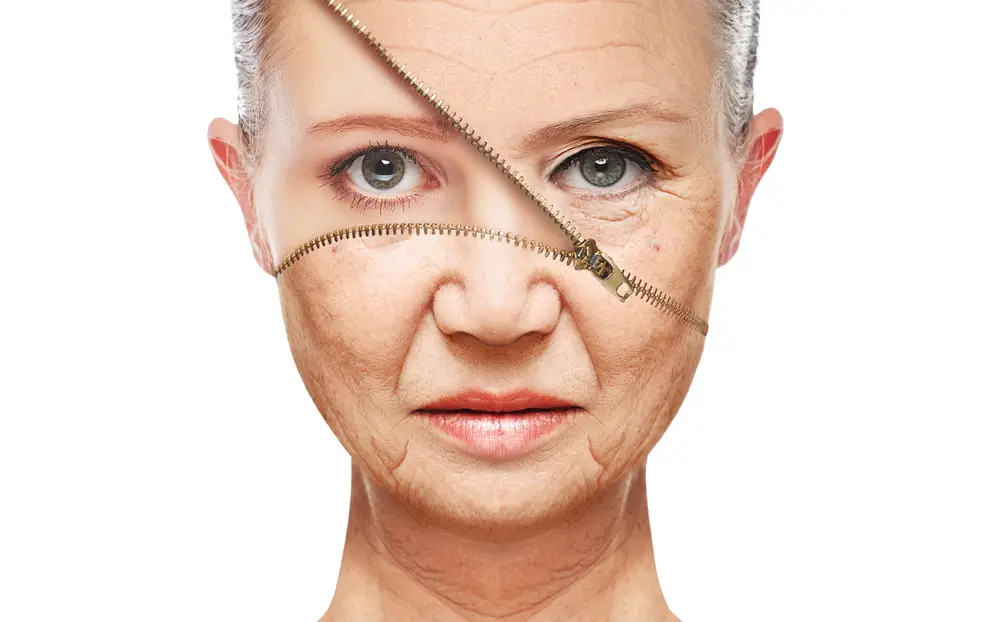
Premature aging is one of the most common skincare concerns, and while genetics play a role, lifestyle factors are often to blame. The gradual loss of collagen and elastin naturally occurs with age, leading to sagging skin, fine lines, and wrinkles. However, external factors like prolonged sun exposure, smoking, dehydration, and poor nutrition can speed up this process significantly. UV rays, in particular, break down collagen and lead to uneven pigmentation and rough texture. According to cosmetic dermatologist Dr. Carole Hazan, wearing sunscreen daily, even during overcast weather, is one of the simplest ways to combat premature aging.
Adopting a skin-friendly lifestyle can also make a world of difference. Eating a balanced diet rich in antioxidants, staying hydrated, and avoiding excessive alcohol can protect your skin from oxidative stress. Quitting smoking is crucial, as tobacco reduces blood flow to the skin, depriving it of essential nutrients. Including anti-aging ingredients like retinol, vitamin C, and hyaluronic acid in your skincare routine can help maintain elasticity and hydration. Small, consistent changes can go a long way in keeping your skin youthful and radiant.
3. Droopy Eyebrows
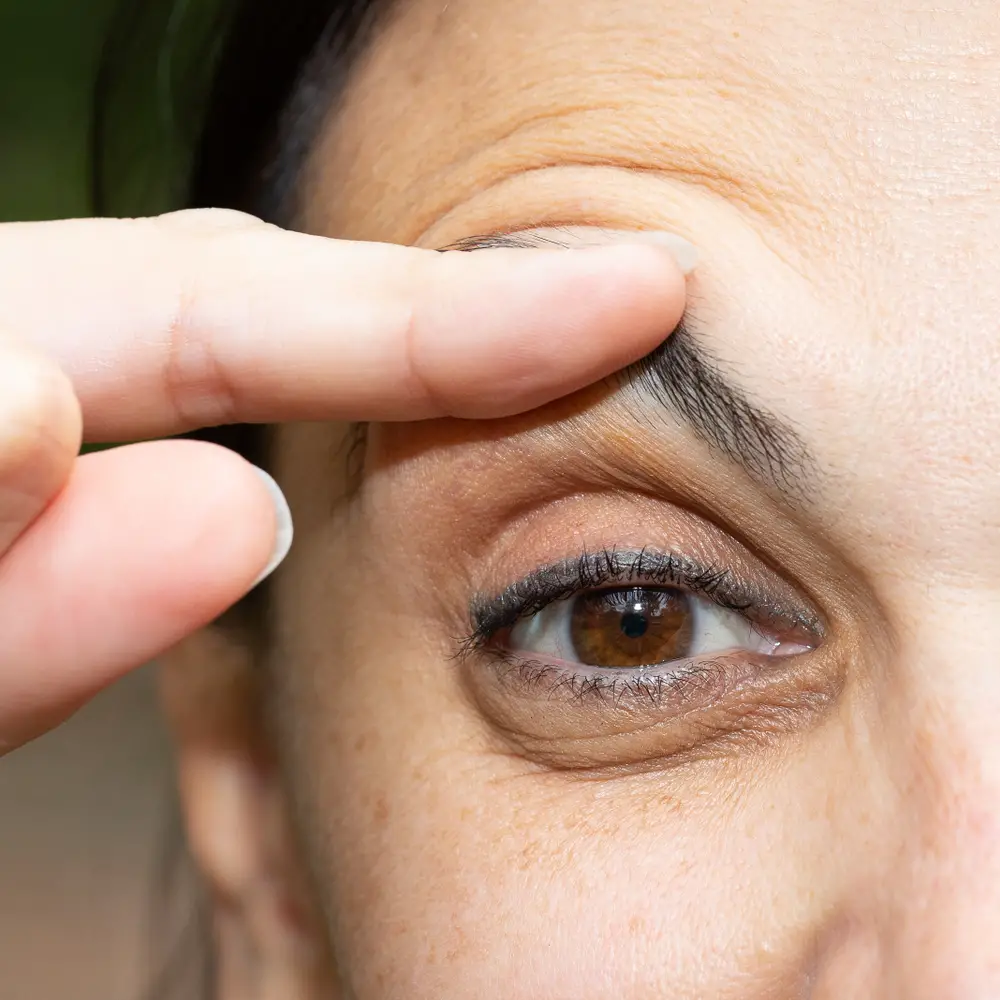
As we age, a loss of collagen and skin elasticity can lead to drooping eyebrows and sagging eyelids, making the face appear tired. While genetics largely determine how quickly this happens, external factors can accelerate the process. Sun damage, for instance, weakens the skin’s structure, while a lack of sleep reduces the skin’s ability to repair itself. Rubbing your eyes excessively or spending long hours staring at screens can also contribute to puffiness and sagging in the eye area. Incorporating SPF into your daily routine and wearing sunglasses can help protect the delicate skin around your eyes.
Combatting droopy eyebrows requires both preventive care and targeted treatments. Gentle massage around the eye area can improve circulation and reduce puffiness. Using products with peptides or caffeine can firm the skin and temporarily lift the area. For more noticeable drooping, non-invasive treatments like Botox or laser therapy can offer effective solutions. Consistently hydrating the skin and using a good eye cream are small steps that can have a big impact over time.
4. Acne Scarring
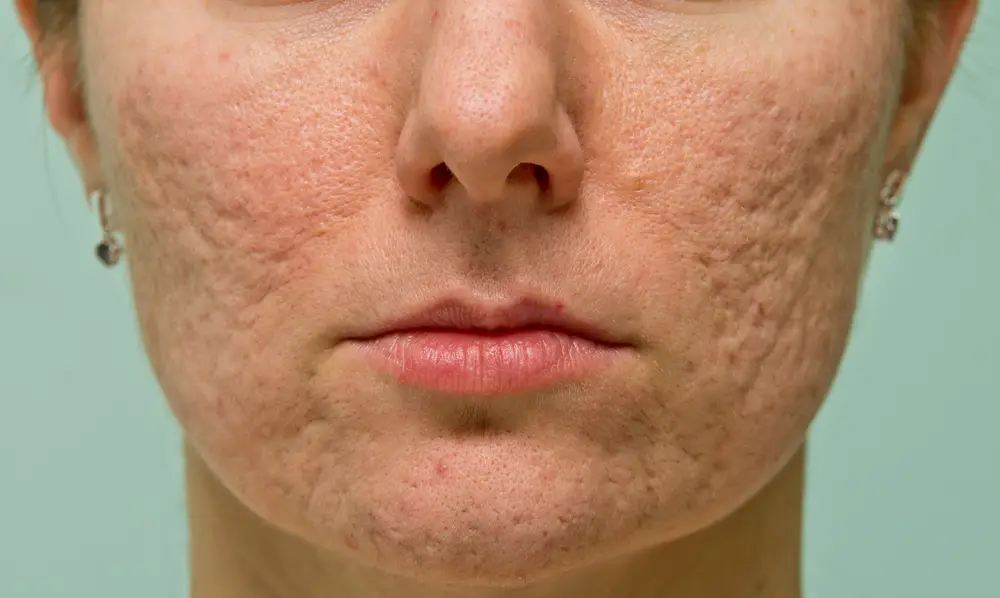
Acne scars form when inflamed blemishes damage the skin, leaving behind uneven texture and discoloration. Picking, squeezing, or bursting cystic acne only worsens the scarring, as it causes deeper trauma to the skin. Improper skincare practices, like using overly harsh exfoliants or high concentrations of active ingredients like retinol or vitamin C, can exacerbate the problem. The type and severity of scarring depend on how the acne was managed and treated. Left untreated, scars can take years to fade, affecting both appearance and confidence.
Minimizing acne scars requires a multi-pronged approach. Chemical peels, microneedling, and laser treatments are popular professional options for reducing their appearance. At home, using gentle exfoliants and products containing niacinamide or alpha hydroxy acids can improve skin texture over time. Staying consistent with your skincare routine and avoiding further irritation is key. Prevention is always better than treatment, so managing acne early and avoiding bad habits like picking at blemishes can help keep scarring to a minimum.
5. Enlarged Open Pores
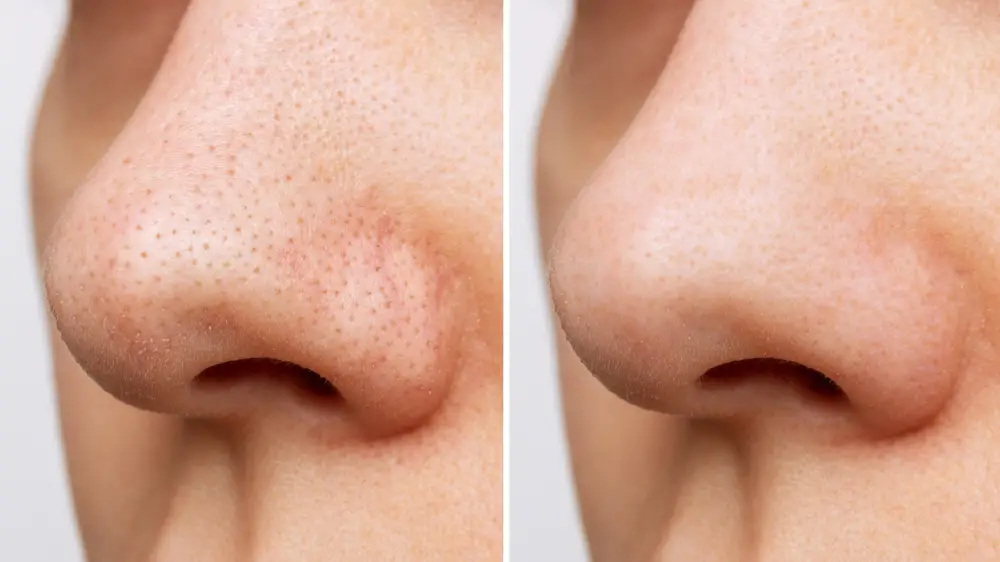
Large pores are often most noticeable around the nose and cheeks, making skin appear uneven or rough. They are caused by a combination of genetics, loss of skin elasticity, and overactive sebaceous glands producing excess oil. When dirt, dead skin cells, or makeup clog these pores, they can stretch further, making them appear larger. Acne and blackheads, which often occur due to blocked pores, only highlight the problem. This makes proper cleansing and pore care essential for maintaining a smooth complexion.
To minimize the appearance of large pores, use non-comedogenic products and a gentle exfoliator to clear debris. Skincare ingredients like salicylic acid and retinol can help reduce oil production and improve skin texture. Regularly using a clay mask can draw out impurities, leaving pores looking smaller. Avoiding over-scrubbing is crucial, as it can damage the skin and make pores more visible. Sun protection is also key, as UV rays weaken the skin’s collagen and elastin, contributing to enlarged pores.
6. Rosacea And Redness
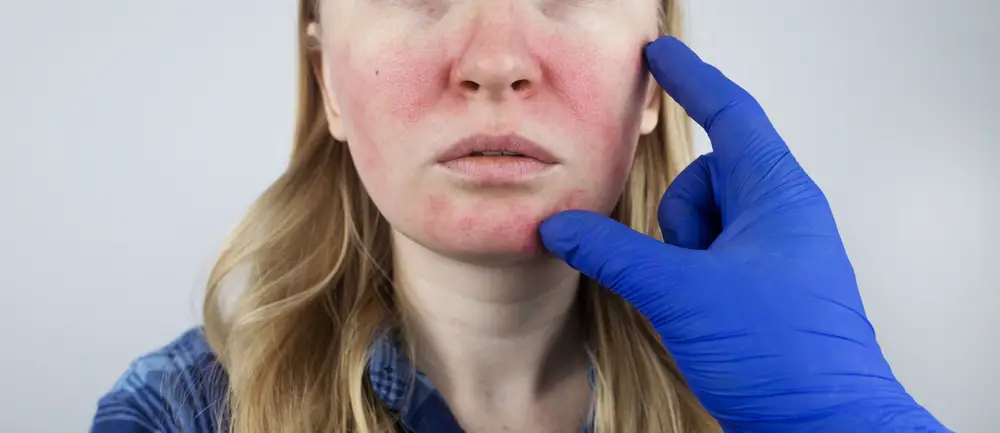
Rosacea is a chronic inflammatory skin condition that causes redness, sensitivity, and sometimes small bumps, mostly around the nose and cheeks. Genetics and environmental triggers are often the main culprits, but lifestyle habits can worsen the condition. Exposure to ultraviolet rays, heat, humidity, or harsh winds can lead to flare-ups, making proper skin protection essential. Hot drinks, spicy foods, alcohol, caffeine, and stress are also known to aggravate rosacea. Managing these triggers can significantly reduce the frequency and severity of outbreaks.
Treatment options include gentle, hydrating cleansers, soothing moisturizers, and prescription creams or gels containing ingredients like azelaic acid or metronidazole. Laser therapy is also effective for reducing redness and broken blood vessels. Avoiding harsh exfoliants and opting for products labeled as hypoallergenic or fragrance-free can help calm irritation. A consistent skincare routine tailored to sensitive skin is critical. Over time, with careful management, rosacea symptoms can become less noticeable.
7. Breakouts And Blemishes
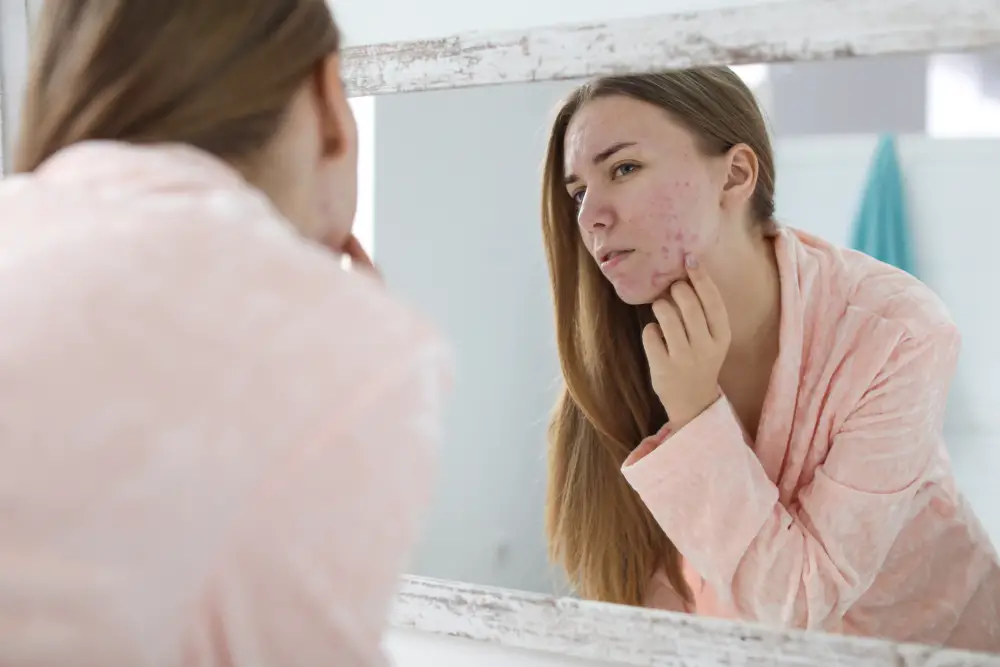
Breakouts and blemishes don’t just stop after your teenage years—adult acne is a frustrating reality for many. Hormonal changes, stress, and poor sleep are some of the biggest culprits behind these unwanted spots. Diet also plays a role; foods high in refined sugar and saturated fats can trigger breakouts. Additionally, using oily or pore-clogging skincare and hair products can exacerbate the issue. When acne strikes, it can leave behind marks that take weeks to fade, affecting your overall skin tone.
To keep breakouts under control, opt for a gentle cleanser with salicylic acid or benzoyl peroxide to remove excess oil and bacteria. Avoid touching your face or picking at blemishes, as this can lead to scarring. A healthy diet rich in whole grains, fruits, and vegetables can also support clearer skin. Consistency is key—stick to a routine, and avoid overloading your skin with too many products. If acne persists, consulting a dermatologist can help you find the best treatment plan.
8. Eczema And Dermatitis
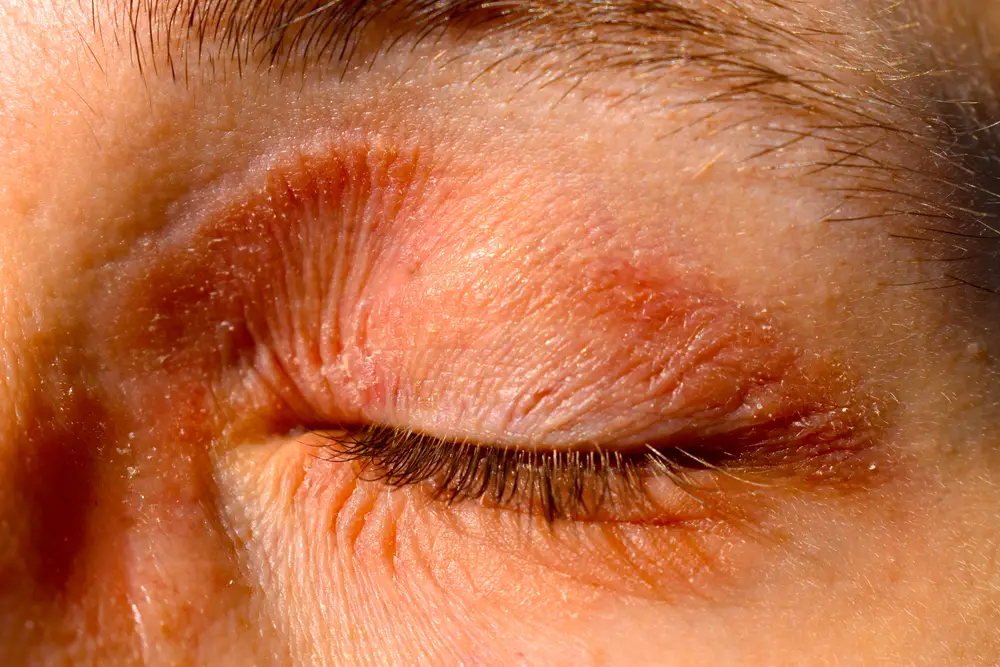
Eczema, or atopic dermatitis, is a chronic condition that leads to itchy, red, and inflamed patches of skin. Often linked to genetics, it can flare up due to allergens, stress, or environmental triggers like extreme temperatures. Irritants in soaps, perfumes, or synthetic fabrics can also aggravate symptoms. Scratching the affected areas worsens the condition, leading to thickened skin or even infection. Managing eczema requires understanding your triggers and keeping your skin barrier healthy.
Using a gentle, fragrance-free moisturizer after bathing can lock in hydration and soothe irritated skin. Topical corticosteroids and prescription creams can help manage severe flare-ups. Avoiding known irritants and sticking to hypoallergenic products is essential for long-term relief. Staying hydrated and eating a diet rich in omega-3s can also support skin health. With consistent care and lifestyle adjustments, eczema symptoms can be significantly reduced.
9. Dry Cracked Lips
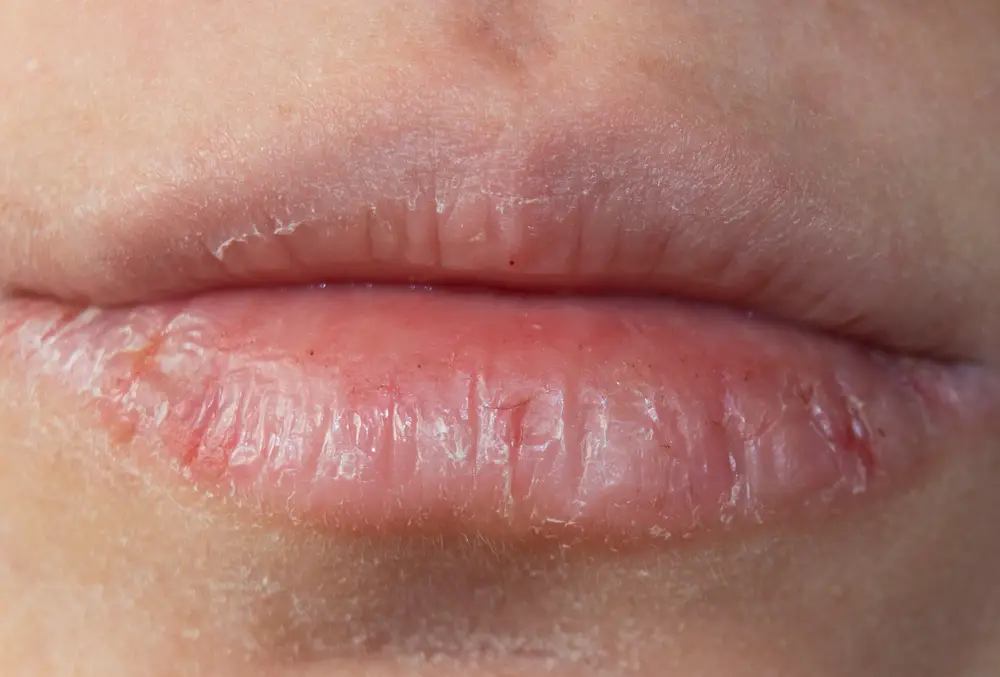
Dry, chapped lips are a common issue, especially during cold weather or in dry climates. Lips lack oil glands, making them prone to dehydration and cracking. Constantly licking your lips might provide temporary relief, but it actually worsens dryness over time. Other culprits include sun exposure, certain lip balms containing irritants like menthol, and vitamin deficiencies. Dehydration and excessive alcohol consumption can also strip moisture from your lips.
To combat dry lips, use a nourishing lip balm with ingredients like shea butter or beeswax, and avoid formulas with irritating additives. Drinking plenty of water throughout the day helps keep your lips hydrated from within. Applying sunscreen to your lips can prevent UV damage that exacerbates dryness. Avoid peeling or picking at flaky skin to allow your lips to heal properly. Regular care can restore softness and prevent further issues.
10. Orange Peel Cellulite
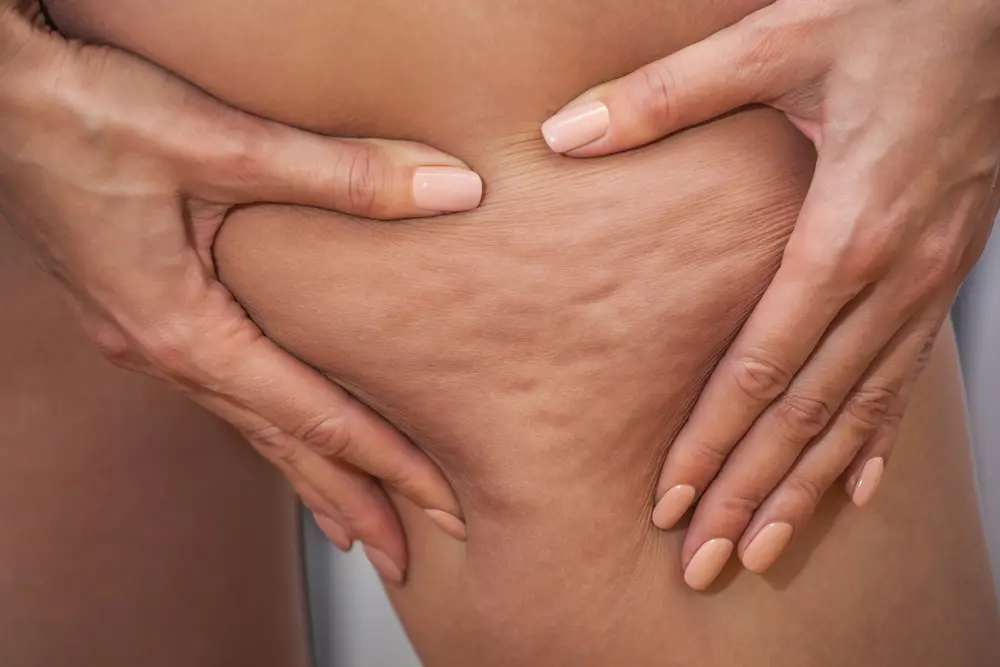
The dimpled, uneven texture known as “orange peel skin” is often caused by cellulite, a condition where fat deposits push through connective tissue beneath the skin. While it’s a natural occurrence, hormonal changes, poor circulation, and inflammation can exacerbate its appearance. Lifestyle factors, such as consuming too much sugar, salt, or processed foods, contribute to fluid retention and skin irregularities. A sedentary lifestyle, combined with insufficient hydration, also worsens the look of cellulite. While orange peel skin is common and harmless, it can affect self-confidence.
Combating cellulite requires a multifaceted approach. Staying hydrated and maintaining a diet rich in whole foods can reduce inflammation and improve skin elasticity. Regular exercise, especially strength training and interval workouts, helps tone muscles and smooth the skin. Massaging the affected areas with a firming cream or dry brushing can improve circulation and lymphatic drainage. While no solution is foolproof, consistency in your skincare and fitness routine can yield noticeable improvements over time.
11. Stretch Marks
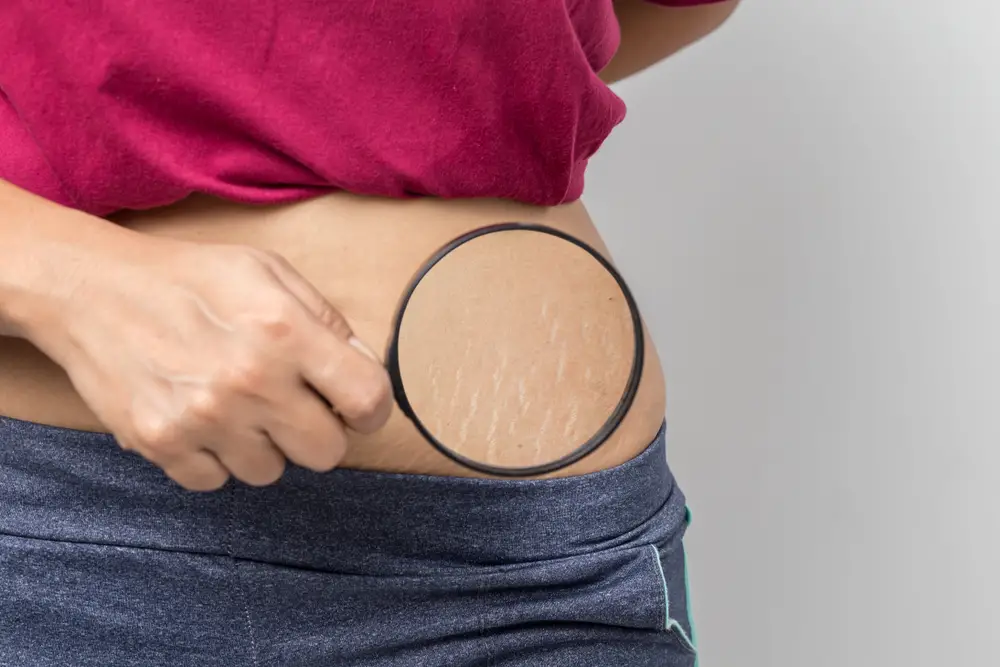
Stretch marks occur when the skin is stretched rapidly due to weight gain, pregnancy, or growth spurts. This rapid stretching causes the dermis, the middle layer of the skin, to tear, creating visible streaks that start out red or purple and fade to white over time. Hormonal changes, particularly those involving cortisol, can weaken the skin’s elasticity, making it more prone to stretch marks. While genetics play a significant role, lifestyle factors like dehydration and poor nutrition can make the marks more prominent. Once they form, they can be difficult to fully erase.
Prevention is your best line of defense against stretch marks. Staying hydrated and maintaining a healthy, stable weight can minimize the likelihood of their appearance. Using moisturizers rich in vitamin E, cocoa butter, or hyaluronic acid can improve skin elasticity and reduce the severity of new marks. For existing stretch marks, treatments like laser therapy, microdermabrasion, or topical retinoids may help fade them over time. While they may not completely disappear, consistent care can make them less noticeable.
12. Brown Aged Spots
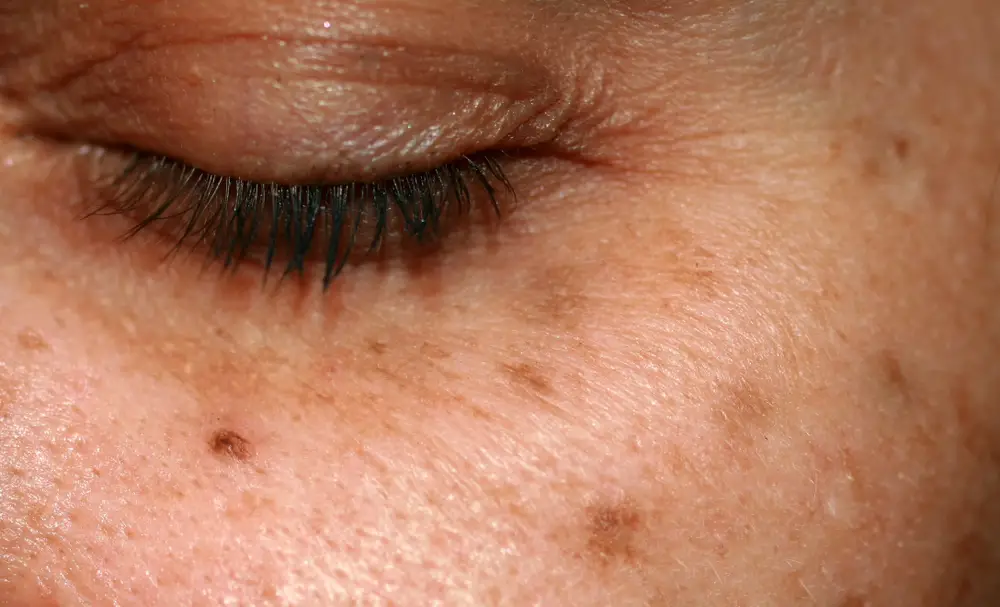
Age spots, also called liver spots, are flat, darkened patches that appear on areas frequently exposed to the sun, like the face, hands, and shoulders. They form when prolonged UV exposure triggers an overproduction of melanin, the pigment responsible for skin color. Hormonal changes during pregnancy or menopause can also exacerbate age spots. While they are harmless, these spots can make the skin appear older and uneven. Without proper protection, sun exposure can worsen their appearance over time.
The best way to prevent age spots is to use sunscreen daily, even on cloudy days, and wear protective clothing. Topical treatments containing ingredients like hydroquinone, kojic acid, or vitamin C can help lighten existing spots. Chemical peels, laser treatments, and microdermabrasion are also effective options for more stubborn pigmentation. Avoiding tanning beds and practicing diligent sun care can prevent new spots from forming. Remember, protecting your skin from UV damage is essential for maintaining a youthful appearance.
13. Dark Eye Circles

Dark circles under the eyes can make you look tired or older than you feel, even if you’ve had a good night’s sleep. They’re often caused by genetics, thinning skin, or the pooling of blood under the eyes due to poor circulation. Factors like lack of sleep, dehydration, allergies, and excessive rubbing of the eyes can worsen their appearance. Smoking and alcohol consumption further dehydrate the skin, making dark circles more pronounced. While they aren’t a health concern, they can affect your confidence.
Reducing dark circles starts with addressing their underlying causes. Stay hydrated, prioritize quality sleep, and apply a cold compress to reduce puffiness. Eye creams with caffeine, hyaluronic acid, or vitamin K can temporarily brighten and hydrate the under-eye area. For more stubborn cases, treatments like fillers or laser therapy can restore volume and smoothness. Wearing sunscreen is crucial, as sun damage can exacerbate pigmentation under the eyes.
14. Sun Damage And Pigmentation
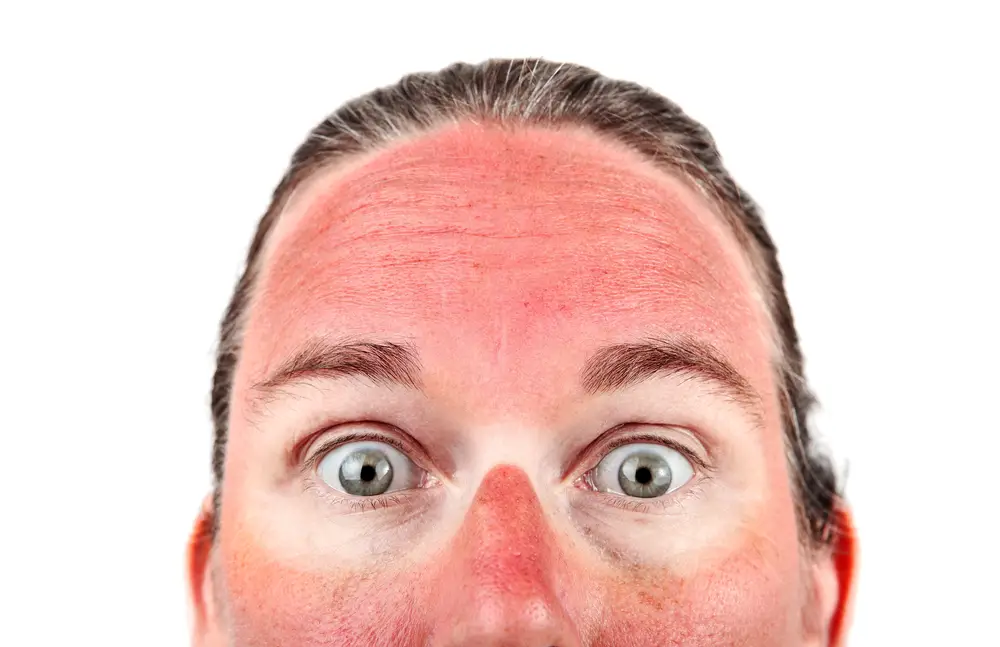
Sun damage, or photoaging, is one of the leading causes of premature aging and skin imperfections. Prolonged exposure to UV rays damages the DNA in skin cells, leading to wrinkles, pigmentation, and even skin cancer. The skin loses its elasticity and develops uneven texture, making it appear older and duller. According to dermatologists, using sunscreen with a high SPF every day is the single most effective way to protect your skin. Sun hats, sunglasses, and clothing with UV protection can also shield your skin from harmful rays.
Reversing sun damage takes time but is possible with the right skincare routine. Antioxidants like vitamin C and E can help repair damaged skin cells and improve texture. Retinoids promote cell turnover, reducing fine lines and dark spots. Professional treatments like chemical peels and laser therapy target deeper layers of damage for more noticeable results. Consistency and prevention are key to maintaining healthy, radiant skin.
15. Spider Veins
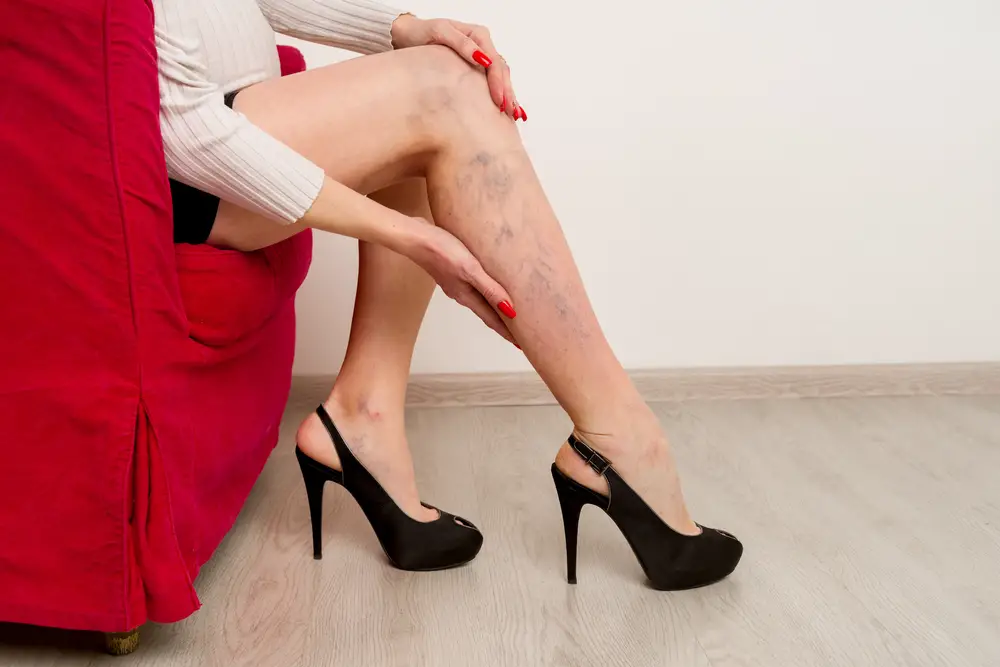
Spider veins, those small red or blue lines that appear just beneath the skin’s surface, are caused by weakened valves in the veins. They’re commonly found on the legs or face and resemble tree branches or spider webs. Factors like genetics, hormonal changes, prolonged standing, or lack of exercise contribute to their development. While they’re generally harmless, spider veins can be uncomfortable or unsightly, leading many people to seek treatment. Lifestyle habits like smoking or wearing tight clothing can exacerbate the issue.
Preventing spider veins involves improving circulation and reducing pressure on the veins. Regular exercise, maintaining a healthy weight, and elevating your legs when possible can help. Compression stockings are a non-invasive option to improve blood flow and reduce discomfort. For existing spider veins, sclerotherapy or laser treatments can diminish their appearance. Protecting your skin from sun exposure and staying active are essential for keeping veins healthy and less visible.


